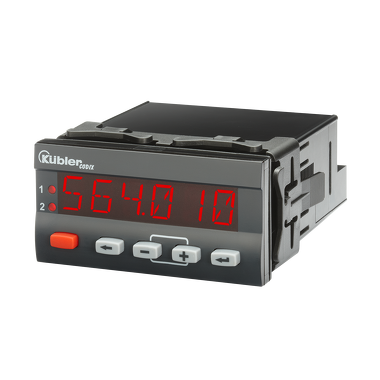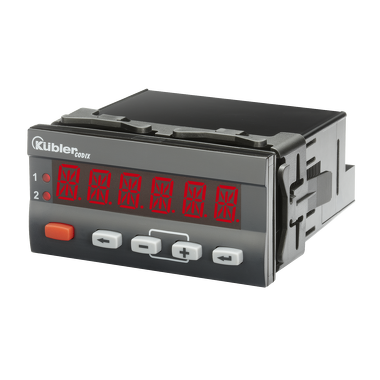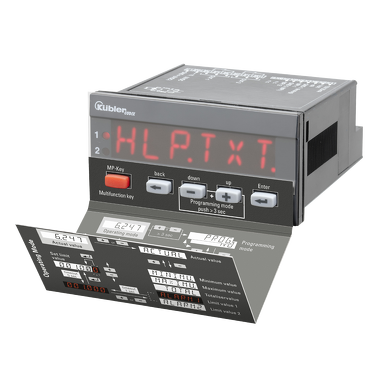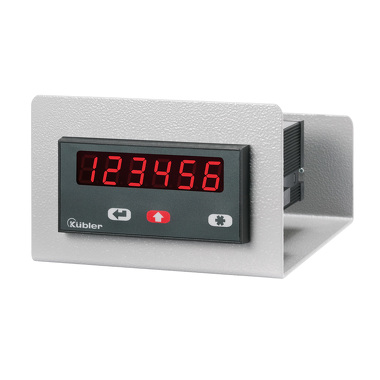





Temperature controllers electronic
Codix 564
|
|



Temperature controller – Monitors and controls 2 limits.
The temperature control unit Codix 564 displays temperature values in high resolution and monitors and controls 2 limit values. All common temperature sensors such as the thermocouples B, E, J, K, N, R, S and T as well as mV inputs, Pt100 and resistance inputs can be connected to the device. These fast displays set new standards in user-friendliness. Thanks to an easy-to-read 14-segment LED display, comprehensible scroll help texts and a practical short instruction card, the annoying reading of extensive instructions is no longer necessary. Optionally also with analog output.| Mechanical | |
|---|---|
| Model | electronic |
| Function |
Temperature displays |
| Dimension 1 |
96 x 48 mm | 92 x 45 mm |
| Protection level |
IP65 |
| Working temperature | -20 °C ... +65 °C |
| Weight | 180 g |
(1) Front panel size | Panel cut-out
| Electrical | |
|---|---|
| Power supply |
10...30 V DC |
| Signal input |
Widerstand 0...500 Ω Thermoelemente B, E, J, K, N, R, S, T +/-100 mV |
| Signal output |
Analog 0...10 V Analog 0...20 mA Analog 2...10 V Analog 4–20 mA 2 x Relais |
User-friendly
Powerful
- Practical short instruction card for parameterization and operation of the device
- Help texts as ticker
- Easy-to-read 14-segment LED display, 6-digit, 14 mm high
- Simple programming with 4 front keys
- One front key and 2 additional inputs can be programmed for specific applications
- Fixed characteristic curves for thermocouples and temperature resistance
- Min/max memory individually resettable
Powerful
- Measuring rate of 10 measurements/second
- Application-specific characteristic curves over 12 interpolation points
- 2 relay outputs (change-over contacts) for limit monitoring with hysteresis and on/off delay function
- Analog output for current measured value, min. value or max. value
- Auxiliary voltage output for the sensor with AC version
- Inputs and outputs electrically isolated
- First-order digital filter for smoothing display fluctuations with unstable input signals
Accessories

Signal light SL35 / SL55: space-saving solution for reliable signalling of machine and system statuses.
The SL35 and SL55 signal lights with a 360° LED display are the perfect solution for quickly and reliably signalling machine and system statuses.In combination with Kübler sensors, measured values can be optimally displayed using the traffic light function (green, yellow, red) with the help of set limit values.
The optional siren can be used to attract attention over a long distance. The compact design and robust housing of the signal lights make them versatile and provide workers and supervisors with quick and clear status information.
| SLX5.XXX.XXX |

 Due to a technical problem, our website is only available to a limited extent. This also affects our download service area. We are already working on the solution and ask for your understanding.
Due to a technical problem, our website is only available to a limited extent. This also affects our download service area. We are already working on the solution and ask for your understanding.





